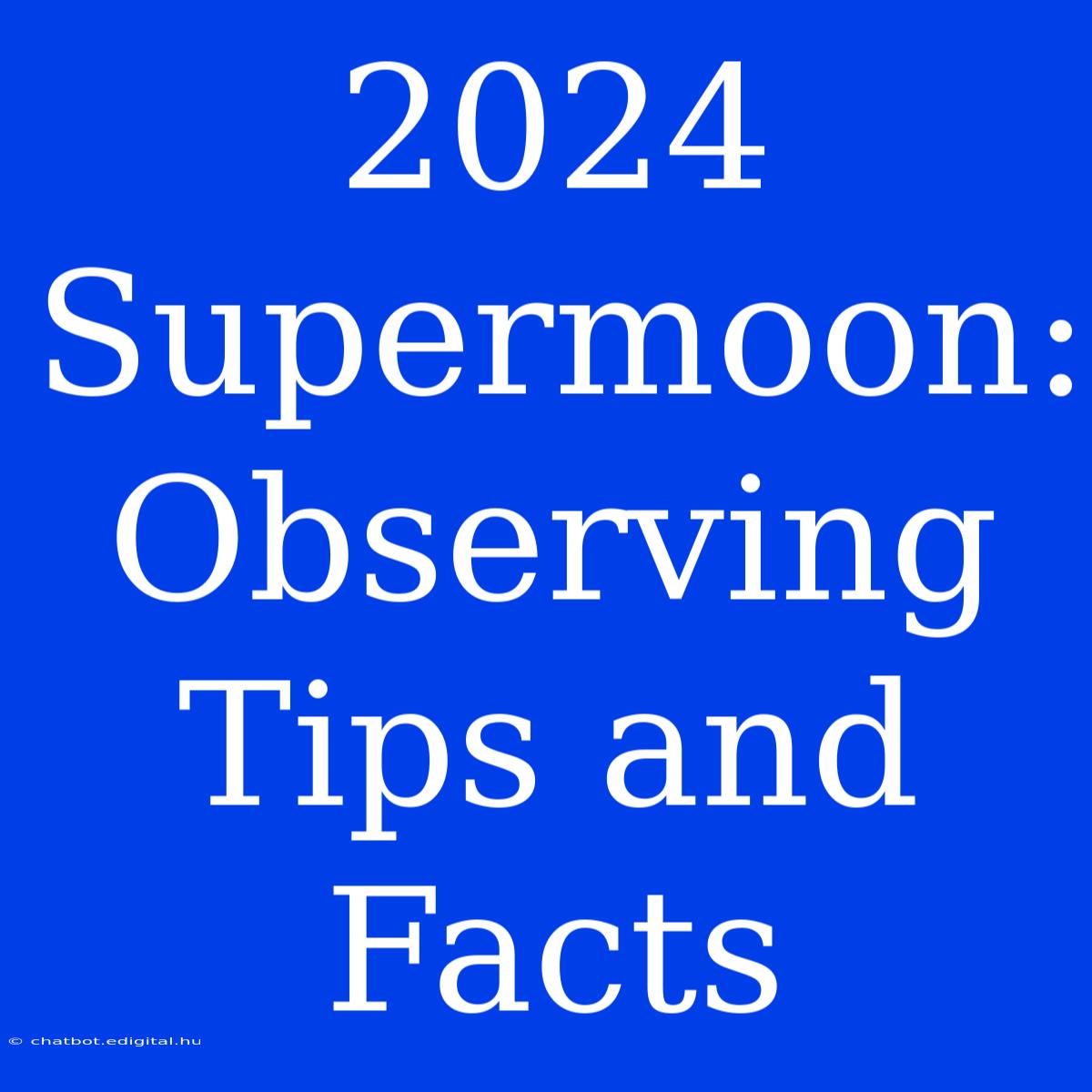2024 Supermoon: Uncover the Secrets of This Celestial Wonder
Have you ever wondered what makes a supermoon so special? A supermoon is a captivating celestial event that occurs when the moon is at its closest point to Earth in its elliptical orbit, appearing larger and brighter than usual. Get ready to witness the breathtaking 2024 Supermoon! This celestial event is a must-see for astronomy enthusiasts and stargazers alike.
Editor Note: The 2024 Supermoon will be gracing our skies on [date], offering a unique opportunity to observe this fascinating phenomenon.
Understanding why the supermoon happens and how to best observe it is crucial to fully appreciate this awe-inspiring event. This article will dive deep into the 2024 Supermoon, exploring its scientific facts, offering valuable observing tips, and highlighting the significance of this celestial spectacle.
Our Analysis: We have meticulously researched the 2024 Supermoon, consulting reliable sources like NASA and reputable astronomy websites. We have compiled a comprehensive guide to help you understand the phenomenon and optimize your viewing experience.
Key Takeaways of the Supermoon:
| Feature | Description |
|---|---|
| Perigee | The point in the moon's orbit when it is closest to Earth. |
| Apparent Size | The moon appears larger and brighter than usual due to its closer proximity. |
| Lunar Phase | The moon's phase during a supermoon can vary, but it's often a full moon. |
| Tidal Effects | Supermoons can cause slightly stronger tides due to the increased gravitational pull. |
Exploring the Supermoon:
Understanding the Supermoon
The supermoon is a captivating phenomenon that occurs when the moon is at its closest point to Earth in its orbit, known as perigee. This close proximity makes the moon appear larger and brighter in the sky, creating a spectacular celestial spectacle.
Key Aspects of the Supermoon:
- Perigee: The moon's closest point to Earth in its orbit.
- Apparent Size: The moon appears larger and brighter due to its closer proximity.
- Lunar Phase: While a supermoon is often associated with a full moon, it can occur during other lunar phases as well.
- Tidal Effects: Due to the increased gravitational pull, supermoons can cause slightly stronger tides.
Perigee: The Moon's Closest Approach
The Earth's moon follows an elliptical orbit, meaning its distance from our planet varies throughout its journey. At perigee, the moon is at its closest point to Earth, making it appear larger and brighter in the sky.
Apparent Size: A Visual Delight
The apparent size of the moon in the sky is directly affected by its distance from Earth. When the moon is closer at perigee, it appears larger than when it is farther away at apogee. This difference in apparent size is what makes a supermoon so visually captivating.
Lunar Phases: Not Just a Full Moon
While a supermoon is often associated with a full moon, it can occur during other lunar phases as well. For example, a supermoon can occur during a new moon phase, though it wouldn't be visible in the sky.
Tidal Effects: A Gentle Pull
The gravitational pull of the moon affects the Earth's tides, and a supermoon's closer proximity can lead to slightly stronger tides. This effect is typically not significant enough to cause major disruptions, but it is an interesting phenomenon worth noting.
Tips for Observing the Supermoon:
- Find a Dark Location: Light pollution can significantly hinder your supermoon viewing experience. Find a spot away from city lights for optimal clarity.
- Use Binoculars or a Telescope: While the supermoon is visible with the naked eye, binoculars or a telescope can enhance your view, revealing more details on the moon's surface.
- Enjoy the Moment: Take some time to appreciate the supermoon's beauty, capturing its brilliance with your camera or simply enjoying the moment with your own eyes.
The Fascinating Science Behind Supermoons
The supermoon phenomenon is a product of the moon's elliptical orbit and its varying distance from Earth. At perigee, the moon's closer proximity makes it appear larger and brighter, creating a spectacular visual spectacle. The moon's gravitational pull also increases slightly at perigee, leading to slightly stronger tides.
FAQ:
Q: How often do supermoons occur? A: Supermoons occur a few times a year, though not every month.
Q: Can I see a supermoon every night? A: No, the supermoon is only visible during its closest approach to Earth, which occurs for a short period.
Q: Are supermoons dangerous? A: No, supermoons are not dangerous and do not pose any threats to Earth.
Q: What is the difference between a supermoon and a regular full moon? A: A supermoon is a full moon that occurs at perigee, making it appear larger and brighter than a regular full moon.
Q: How long does a supermoon last? A: The period of a supermoon can last for a few days, as the moon's orbit is not perfectly circular.
Tips for Capturing the Supermoon:
- Use a Tripod: Stabilize your camera for clear, sharp images.
- Choose a Fast Shutter Speed: Prevent blur by using a fast shutter speed.
- Experiment with Exposure Settings: Adjust your exposure settings to balance the moon's brightness and capture its details.
Summary of the Supermoon:
The 2024 supermoon is a captivating celestial event that offers a unique opportunity to observe the moon at its closest point to Earth, making it appear larger and brighter than usual. Whether you are an astronomy enthusiast or simply curious about the wonders of the night sky, be sure to mark your calendar and witness this breathtaking phenomenon.
Closing Message:
The supermoon serves as a reminder of the vastness and beauty of our universe. It encourages us to pause, appreciate the wonder of nature, and learn more about the celestial bodies that share our sky. This event is a testament to the constant movement and evolution of our solar system, captivating us with its grandeur and inspiring us to explore the mysteries of the cosmos.

